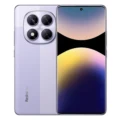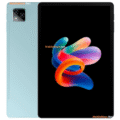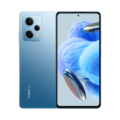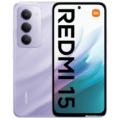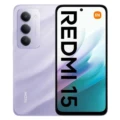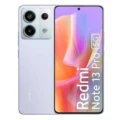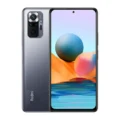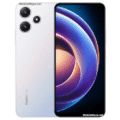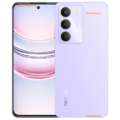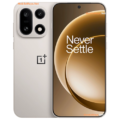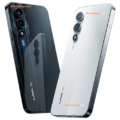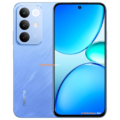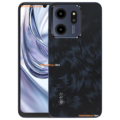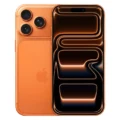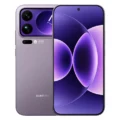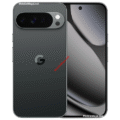Price List: Under Tk.5,000 | Tk.5001-10000 | Tk.10001-15000 | Tk.15001-20000 | Tk.20001-30000 | Tk.30001-40000 | More Mobiles
- Home
- All Mobile
- Xiaomi
- Xiaomi Redmi K80e
Xiaomi Redmi K80e
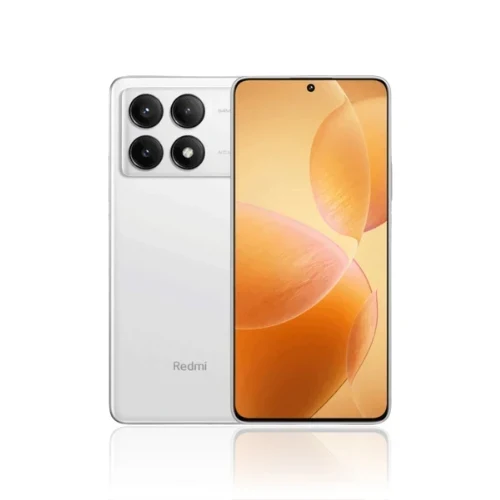


Specifications
Price in Bangladesh
| Expected Price | Coming soon |
General
| Device Type | Smartphones |
| Released | December, 2025 |
| Status | Available |
Hardware & Software
| Operating System OS => Every computer system run on a base software called Operating System (OS). Operating System controls all basic operations of the computer (such as smartphone, PDAs, tablet computers and other handheld devices). The Operating System allows the user to install and run third party applications (apps), apps are used to add new functionality to the device. | Android |
| OS Version | v14 |
| Chipset Chipset is a group of integrated circuits designed to perform one or a more dedicated functions, often with real time computing constraints, Popular smartphones are equipped with more advanced embedded chipsets that can do many different tasks depending on their programming. | Mediatek Dimensity 8300 Ultra (4 nm) |
| CPU CPU (Central Processing Unit) mostly known as processors, CPU processes instructions in order to carry out certain functions that make your device operate properly. Processors are often described as the brain of computers, smartphones and tablets, Smartphones and tablets rely on processors to carry out their every task, Processors are an incredibly important factor in selecting any type of computing device, including your smartphone. | - |
| GPU GPU (Graphics Processing Unit) is a single-chip processor designed to rapidly manipulate and alter memory to accelerate the creation of images in a frame buffer intended for output to a display, This includes things such as lighting effects, object transformations, and 3D motion. | - |
| RAM (Memory) RAM (Random Access Memory) is a type of computer memory that can be accessed randomly, any byte of memory can be accessed without touching the preceding bytes that allows information to be stored and accessed quickly from random locations. RAM is the most common type of memory found in computer systems, smartphones, tablets and other electronic devices. | 12 GB, 16 GB |
Design
| Dimensions | - |
| Weight | - |
| Colors |
Black, White, Mint |
Display
| Display Type Display Technology => A number of display technologies and types used in mobile phones => TFT (Thin Film Transistor), IPS (In-Place Switching), OLED (Organic Light Emitting Diode), AMOLED (Active-Matrix Organic Light-Emitting Diode), Super AMOLED (an even advanced version of AMOLED), Resistive Touchscreen (Resistive touchscreens contain two layer of conductive material with a very small gap between them which acts as a resistance), Capacitive Touchsceen (Capacitive touchscreen technology consists of a layer of glass coated with a transparent conductor) | OLED |
| Size | 6.67 inches |
| Resolution | 1220 x 2712 pixels |
| HDR 10 / HDR+ support |
Rear Camera
| Camera Setup | Dual |
| Main Camera | 64MP |
| Second Camera | 8 MP |
| OIS | |
| Video | Yes |
Front Camera
| Camera Setup | Single |
| Secondary |
20 MP |
| Video | Yes |
Battery
| Battery Type Battery Type => Cell phones run on various kinds of batteries depending on the manufacturer, phone size or shape and features. There are basically four types of cell phone batteries => Lithium Polymer, Lithium Ion, Nickel Metal Hydride and Nickel Cadmium. | Li-Ion (Lithium Ion) |
| Placement | Non-removable |
| Capacity Battery Capacity is a measure (typically in Amp-hr) of the charge stored by the battery, and is determined by the mass of active material contained in the battery. The battery capacity represents the maximum amount of energy that can be extracted from the battery under certain conditions. | 5500 mAh |
Storage
| Storage Capacity | 256 GB, 512 GB, 1 TB |
| USB OTG |
Network
| 2G Network |
GSM 850 / 900 / 1800 / 1900 - SIM 1 & SIM 2 |
| 3G Network |
HSDPA 850 / 900 / 1700(AWS) / 1900 / 2100 |
| 4G Network |
LTE |
| 5G Network |
SA/NSA |
| SIM SIM (Subscriber Identity Module) is a small card that contains mobile network subscriber's account information. This allows the phone using the card to attach to a mobile network. The SIM card is most commonly associated with GSM and UMTS mobile networks. Moving a SIM card from one phone to another allows a subscriber to switch mobile phones without having to contact their mobile network carrier. SIM cards can also be used by a phone to store limited amounts of data, such as phone numbers and text messages. | Standard SIM |
Data
| GPRS GPRS (General Packet Radio Service) is a packet oriented mobile data service on the 2G and 3G cellular communication system's global system for mobile communications (GSM), Generally, GPRS is used for the purpose of wireless data transfer, such as sharing pictures and videos or browsing the Internet via a mobile phone connection. | |
| EDGE EDGE (Enhanced Data GSM Environment) is a wireless network technology generally considered the next step in the 2G network offers data transfer rates up to four times faster than ordinary GSM networks, Generally, EDGE is used for the purpose of wireless data transfer, such as sharing pictures and videos or browsing the Internet via a mobile phone connection. | |
| Speed | HSPA, LTE-A, 5G |
| Web Browser Web Browser => a web browser is a software application used to locate, retrieve and display content on the World Wide Web, including Web pages, images, video and other files, The primary function of a web browser is to render HTML, the code used to design or markup webpages. | HTML5 |
Messaging
| SMS SMS (Short Messaging Service) is a text messaging service component of phone, Web, or mobile communication systems. It uses standardized communications protocols to allow mobile phone devices to exchange short text messages over the networks. | Yes |
| MMS MMS (Multimedia Messaging Service) is a standard way to send messages that include multimedia content (audio clips, video clips and images) to and from mobile phones over wireless networks using the WAP protocol. | |
| Email Email (Electronic Mail) is a system for receiving, sending, and storing electronic messages, Similar to a letter, email is text messages that may contain files, images, or other attachments sent via the internet to a recipient by using applications and software prograps. An email address is required to receive email, and that address is unique to the user. | Yes |
| IM IM (Instant Messaging) is an exchange of text messages through a software application, it enable you to create a kind of private chat room with another individual in order to communicate in real time over the Internet. | Yes |
Connectivity
| Bluetooth Bluetooth is a wireless communications technology for exchanging data between mobile phones, headsets, computers and other network devices over short distances without wires, Bluetooth technology was primarily designed to support simple wireless networking of personal consumer devices. | 5.4, A2DP, LE |
| Wi-fi Hotspot | |
| Infrared Infrared connectivity is an old wireless technology used to connect two electronic devices. It uses a beam of infrared light to transmit information and so requires direct line of sight and operates only at close range. | |
| USB | USB Type-C, OTG |
| GPS GPS The Global Positioning System is a satellite-based radio navigation system, GPS permits users to determine their position, velocity and the time 24 hours a day, in all weather, anywhere in the world, In order to locate your position, your device or GPS receiver must have a clear view of the sky. | GPS, GALILEO, GLONASS, QZSS, BDS (B1I+B1c) |
| NFC NFC (Near field communication) is a set of standards for smartphones and similar devices to establish peer-to-peer radio communications with each other by touching them together or bringing them into proximity, usually no more than a few inches. |
Media
| FM Radio | No |
| Alert Types | Vibration, MP3, WAV ringtones |
| Loudspeaker | Yes |
| 3.5mm Jack | No |
Sensors & Security
| Fingerprint Sensor |
More
| Made By | China |
Performance Tests
Xiaomi Redmi K80e Price in Bangladesh
The Xiaomi Redmi K80e is expected to launch in Bangladesh with an estimated starting price of ৳45,000 for the 256GB storage variant. Additional options may include 512GB and even a high-capacity 1TB model, catering to users who require more onboard storage.
Xiaomi’s Redmi K80e is positioned as a mid-range smartphone with premium features typically found in higher-tier models. It combines a sleek design, a vivid OLED display, a powerful Dimensity 8300 Ultra chipset, and a long-lasting 5500mAh battery. The device also features a 64MP dual rear camera setup with OIS, 5G connectivity, and the latest Android 14 OS. With strong performance, elegant design, and competitive pricing, the K80e stands out in the crowded mid-range segment.
Xiaomi Redmi K80e Specifications
Display and Design
The Redmi K80e features a 6.67-inch OLED display with a crisp 1220 x 2712 pixel resolution. The screen supports HDR10+, ensuring vibrant colors and deep contrast for immersive viewing. Though details about the refresh rate are yet to be confirmed, Xiaomi is expected to equip this model with at least a 120Hz panel, keeping in line with modern standards for smooth scrolling and gaming.
In terms of design, the phone will be available in three elegant colors: Black, White, and Mint. While official dimensions and weight are yet to be revealed, Xiaomi typically emphasizes slim profiles and a comfortable hand-feel in its K-series. The overall aesthetic promises a modern, minimalist look that will appeal to a broad range of users.
Performance and Processor
At its core, the Redmi K80e is powered by the MediaTek Dimensity 8300 Ultra chipset, built on an efficient 4nm process. This high-performance processor is tailored for smooth multitasking, lag-free gaming, and quick app launches. While the CPU and GPU details remain under wraps, users can expect flagship-level performance at a mid-range price.
The device comes with two generous RAM options: 12GB and 16GB, making it a multitasking powerhouse. Storage options include 256GB, 512GB, and 1TB, all based on fast UFS technology. While there’s no mention of microSD support, the onboard storage should suffice for most users, including heavy media consumers and gamers.
Camera and Video
The Redmi K80e is equipped with a dual rear camera setup featuring a 64MP primary sensor and an 8MP secondary lens, likely an ultrawide. Optical Image Stabilization (OIS) is present, allowing for sharper photos and more stable video capture. Video recording is supported at up to 4K (2160p), ideal for content creators and vloggers.
On the front, a 20MP selfie camera ensures clear, high-quality self-portraits and smooth video calls. The camera setup is further enhanced by software features such as AI scene detection, night mode, and portrait enhancements, making it a versatile shooter for various lighting and subject conditions.
Battery and Charging
One of the standout features of the Redmi K80e is its 5500mAh Li-Ion battery, which is expected to deliver all-day usage even with heavy screen time and gaming. Although the exact charging wattage is yet to be confirmed, fast charging support is almost a certainty given Xiaomi’s track record. Users can expect efficient power management thanks to the optimized Android 14 OS and the power-efficient 4nm chipset.
Connectivity and 5G Support
The Redmi K80e offers comprehensive network support, including 2G, 3G, 4G LTE, and 5G (SA/NSA) bands, ensuring future-proof connectivity. It supports dual SIM slots, ideal for users who manage both personal and professional numbers.
Additional connectivity features include:
- Bluetooth 5.4 with A2DP and LE
- Wi-Fi Hotspot support
- USB Type-C with OTG support
- Infrared port (a classic Xiaomi feature)
- GPS with multiple satellite systems: GALILEO, GLONASS, QZSS, BDS
Notably, there’s no 3.5mm headphone jack or FM radio, reflecting a shift toward wireless audio and streaming media.
Additional Features
The phone runs on Android 14 with Xiaomi’s custom UI, likely MIUI or HyperOS, offering a smooth, customizable interface. A fingerprint sensor is expected for biometric security, though placement details (side or under-display) are yet to be confirmed.
Other highlights include:
- Stereo speakers for immersive audio
- NFC support for wireless payments
- High-quality vibration motor and alert customization
- No official water resistance rating (TBC)
Reason to Buy
Here are some top reasons to consider the Xiaomi Redmi K80e:
- Flagship-grade Dimensity 8300 Ultra processor
- Large OLED display with HDR10+ support
- Massive 5500mAh battery for extended use
- Up to 16GB RAM and 1TB storage options
- 64MP main camera with OIS and 4K video
- 5G connectivity with advanced GPS and Bluetooth 5.4
- Modern, stylish design in multiple color options
- Android 14 with Xiaomi’s intuitive UI
Verdict
The Xiaomi Redmi K80e is shaping up to be one of the most impressive mid-range smartphones of 2025. With a high-performance chipset, robust battery, and versatile camera system, it balances power and efficiency beautifully. It’s especially appealing to tech enthusiasts, gamers, and content creators looking for flagship-level features without the flagship price tag.
If you’re seeking a future-ready phone that delivers on performance, design, and battery life, the Redmi K80e deserves a spot on your radar.
FAQ
Q: What is the price of the Xiaomi Redmi K80e in Bangladesh?
A: The expected starting price is around ৳45,000, depending on storage variants.
Q: When will the Xiaomi Redmi K80e be released?
A: It is expected to launch in May 2025.
Q: Does the Redmi K80e support 5G?
A: Yes, it supports 5G SA/NSA networks.
Q: How many cameras does the Redmi K80e have?
A: It has a dual rear camera setup (64MP + 8MP) and a 20MP front camera.
Q: What is the battery capacity of the Redmi K80e?
A: It features a 5500mAh non-removable battery.
Q: Is there a headphone jack on the Redmi K80e?
A: No, the phone does not include a 3.5mm headphone jack.
Q: What are the available colors for this model?
A: The Redmi K80e will be available in Black, White, and Mint.
User Reviews
Disclaimer Note
We do not guarantee that the information of this page is 100% accurate and up to date.

